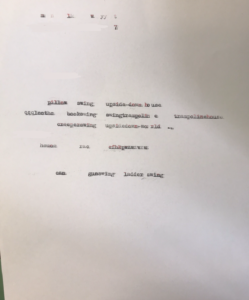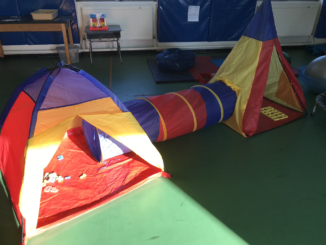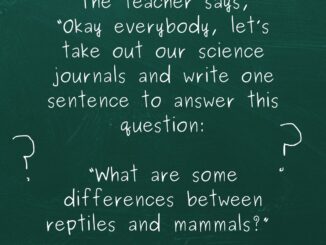I have an old typewriter in my room.
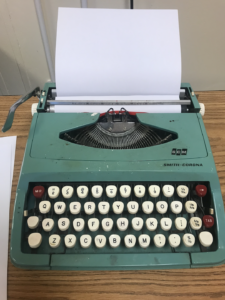
I also have a large gym mat with a QWERTY keyboard created on it in tape.
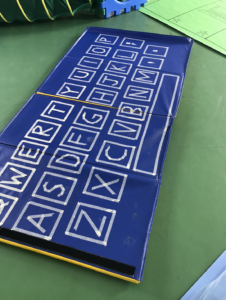
Both of these are for the same purpose: to provide play-based, child-led ways for children to learn the layout of a QWERTY keyboard. Typing is an incredible adaptation for young people with fine motor difficulties to be able to express their thoughts in a written medium, and eventually simply a mechanic by which people access the world all the time. Adaptive keyboards do exist, but QWERTY is ubiquitous. So I think it’s worthwhile to try to learn it first. But sometimes kids start getting frustrated with teach-typing games because the key placement doesn’t make sense to them. Thus, the availability of play-based materials on this subject in my room.
But I digress.
What I wanted to tell you about is an excellent example of creative play that a child invented recently in my room. The typewriter and the keyboard mat are 2 separate stations. But, of course, children are always allowed to take things from one station and combine them with another. This child was interested in the typewriter but hesitant to tap the keys with enough force for them to actually produce a letter on the page. (They have to hit the ink ribbon with enough force to make a letter.) They were also shy about not knowing how to spell or read very well.
They dictated some things to me that they wanted me to type, and I did, and showed them. Then they got an idea. They began jumping from key to key on the big keyboard mat. When they landed on a letter they would read it to me and I would type it on the typewriter. When they lost their balance, missed a key, or fell off the mat, I would type a space and announce that that word was done. Then they wanted me to read back the word they made. I read silly gibberish words like “cfhkpwzwzwzwz” and they laughed their head off and did it again.
What a more delight-filled way to learn where letters are at on a keyboard than the frustrating process of looking painstakingly for each individual letter you want to type!
